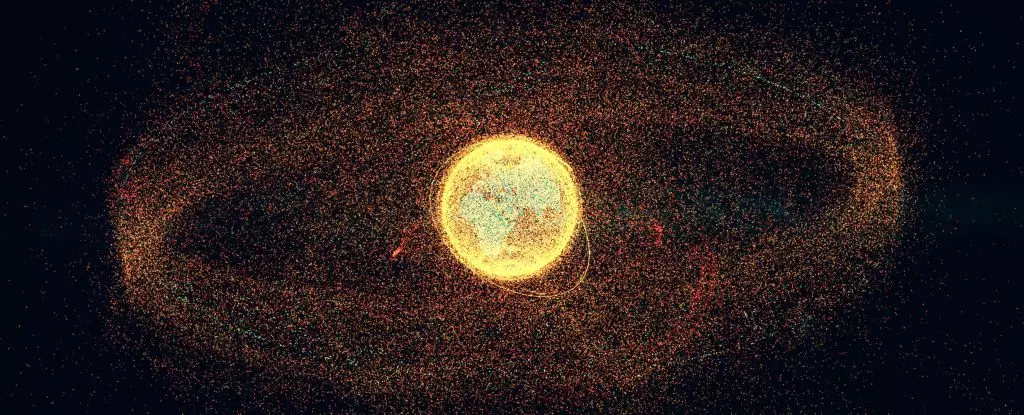As humanity’s thirst for exploration expands to the stars, we face an increasingly daunting problem right above our heads: space debris. According to the European Space Agency (ESA), the pace at which the debris in Earth orbit is accumulating is alarming. This phenomenon is a direct consequence of launching more satellites than we can manage, resulting in a lopsided ecosystem where inert and defunct satellites dominate the cosmos. The analogy of a growing junkyard is more than just conceptual; if action isn’t taken soon, we risk reaching a tipping point known as the Kessler cascade—a catastrophic scenario where collisions between space objects create even more debris in a cycle spiraling out of control. It’s imperative to grasp the gravity of the situation and recognize that inaction is, itself, an action with catastrophic consequences.
Current Statistics Paint a Stark Picture
The ESA’s annual Space Environment Report reveals some staggering statistics. It’s critical to focus not just on the number of operational satellites—approximately 11,000—but also on the obscured reality of debris: nearly 54,000 objects larger than 10 centimeters and a staggering 130 million pieces measuring between one millimeter and one centimeter zip around Earth at velocities that can obliterate functioning equipment. Each tiny shard is a potential harbinger of disaster, capable of causing severe damage to the International Space Station, the Hubble Telescope, or any satellite in use. These are figures that should keep policymakers, engineers, and casual observers awake at night. The dilemma illustrates a growing imbalance in our approach to satellite deployment and debris management.
While some technological progress is being made—like longer-term orbital planning and disposal guidelines—the real issue at hand is the alleviation of existing dangers. Even if all launches were halted today, the debris still in orbit would continue to accumulate via fragmentation events, suggesting that we may have already passed a crucial inflection point. The scientific consensus is clear: our current trajectory is unsustainable.
The Invisible Threat of Fragmentation
What makes space debris even more unpredictable is the nature of its creation. Fragmentation doesn’t only occur by collisions; a majority of it arises from unplanned explosive failures and natural degradation of materials. A recent ESA report highlighted that non-collisional fragmentation was the most significant contributor to space junk in 2024, with over 2,600 new pieces generated from just 11 events. Unlike a collision that can be mitigated with strategic planning, these fragmentation events are low-hanging fruit for disaster—their randomness renders them uncontrollable, and each new fragment increases the risk to operational missions.
The frequency and unpredictability of these events make this issue ultra-urgent. Each fragment not only contributes to the growing mass of debris but also exponentially increases the likelihood of future collisions, further perpetuating this hazardous cycle.
Efforts Toward a Solution
Despite the formidable challenges posed by debris, there are rays of hope in our efforts to manage and mitigate this environmental crisis. The enhanced compliance with debris mitigation guidelines is one of the bright spots. For instance, more than 90% of low-earth orbit rocket bodies are now leaving valuable orbits in line with the re-entry standards established by the ESA. Moreover, the percentage of controlled entries has risen sharply, suggesting that guidelines designed for the safe disposal of rockets and satellites are starting to take effect.
However, existing strategies alone cannot suffice. Initiatives aimed at actively cleaning up the orbital environment must gain momentum. This will require unprecedented international cooperation akin to climate agreements here on Earth. It’s not only about following guidelines but creating innovative solutions that can reverse the damage we’ve inflicted upon our orbital commons.
Global Responsibility for Future Generations
The stakes couldn’t be higher. The fate of future space exploration may hang in the balance as we grapple with the fallout of our advancements in space technology. The question arises: will we take the necessary steps to address this looming crisis before it escalates into chaos? The answer lies not just in technological advancements but in fostering a sense of global responsibility. By working collaboratively across nations, we can address our shared predicament—one that impacts scientists, private companies, the military, and aspiring space voyagers alike.
The time to act is now, as we stand at the precipice. If we hope to leave a legacy of exploration and discovery for our descendants, managing the debris must transform from an afterthought into an urgent global mission. The future of our satellites is not solely in the hands of engineers but in the hearts of humanity itself, for a cleaner, safer orbit is a dream we must share and pursue together.


Leave a Reply